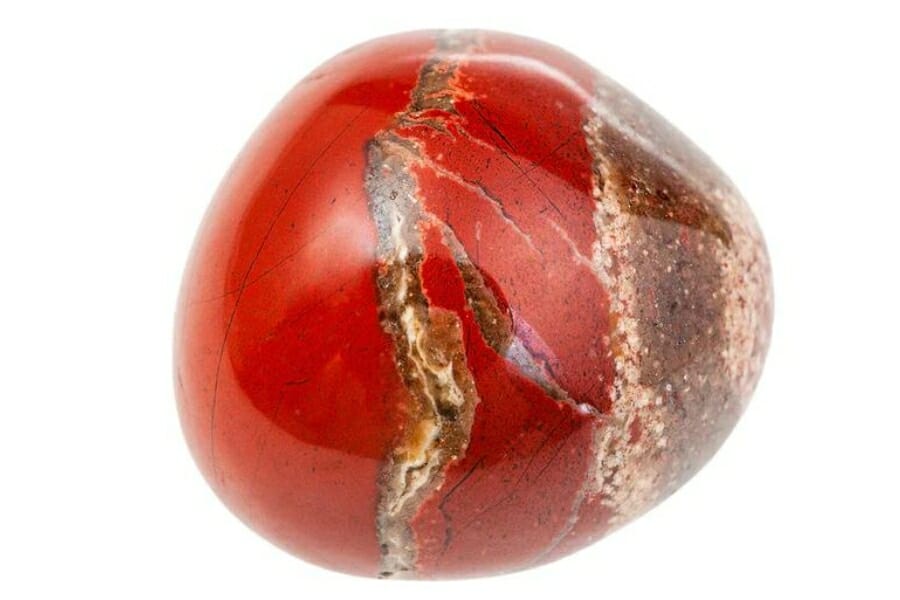Finding Jasper is relatively accessible, even easy for people who have never looked for minerals. The stone is usually found in alluvial deposits or sedimentary formations, where water has moved and left minerals behind.
Jasper is unique in its variety; it can range from solid colors to intricate patterns, including stripes, speckles, and even landscapes. Its kaleidoscopic aesthetic qualities make each piece unique, and its relatively abundant supply makes it an accessible stone for collectors and artisans alike.
If you want to start rock collecting, Jasper is a great and rewarding starting point!
What is Jasper?
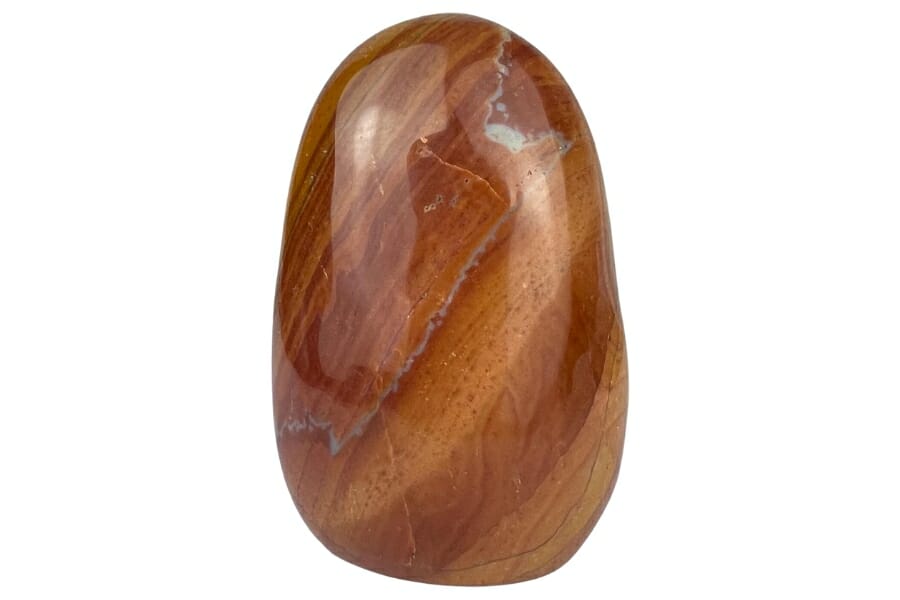
Jasper is a form of chalcedony, a microcrystalline variety of quartz known for its vibrant colors and intricate patterns.
It’s made when silica-rich fluids settle in different types of host rocks, often when the temperature and pressure are low. Over time, the minerals and structures of these deposits change through a process called diagenesis. This leads to the beautiful, hard stones we know as jasper.
Jasper is commonly found in the United States arid regions like Arizona, Oregon, California, and Idaho. It’s often located in alluvial deposits, where water deposits minerals, and sedimentary rock formations.
The different types of Jasper
Jasper comes in a vast range of colors and patterns, and each type has a unique look that makes it very popular with collectors and artists.
The variety is impressive, from the solid, earthy colors of Red Jasper to the intricate, landscape-like patterns of Picture Jasper. We’ve listed each type below and what’s unique about each.
Blue Jasper
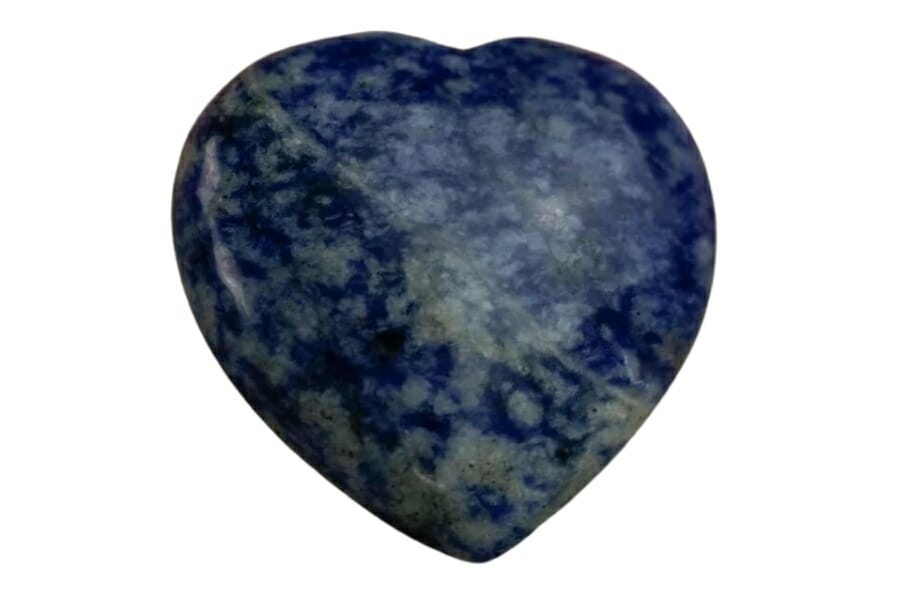
Blue jasper is a type of jasper that doesn’t come up very often. It has calming blue colors, often mixed with gray or black streaks, unlike the more common red or yellow jaspers, usually caused by iron deposits.
Blue Jasper’s blue color is often caused by other trace minerals or special conditions when it was formed. If you see Blue Jasper, you have a version of this versatile stone that isn’t very common.
Dalmatian Jasper
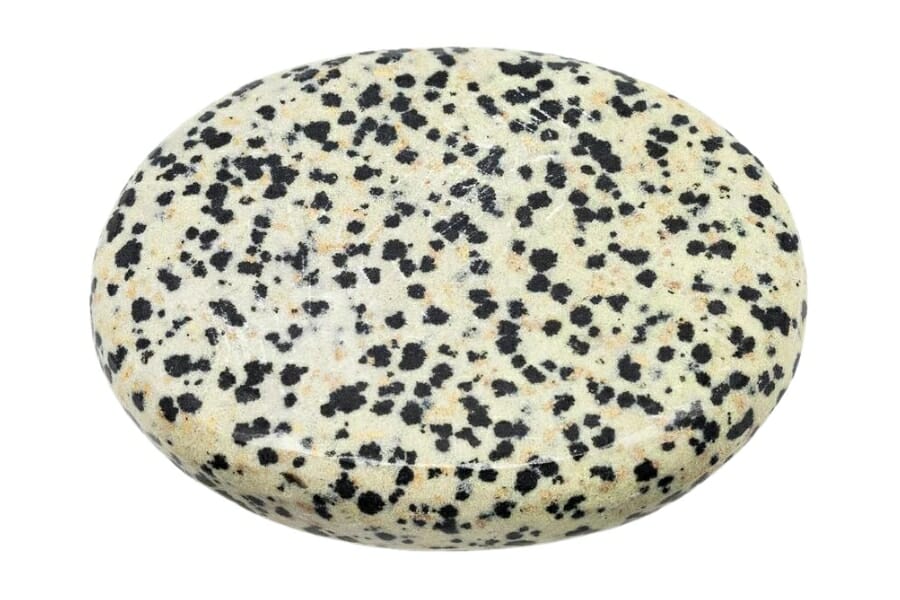
Dalmatian Jasper is easily recognizable by its unique black or brown spots against a creamy white or beige background, resembling the coat of a Dalmatian dog. This distinctive pattern sets it apart from more uniformly colored jaspers.
While many types of jasper are found in sedimentary formations, Dalmatian Jasper is typically found in igneous rocks, specifically rhyolite deposits. This unique jasper variant is a collector’s favorite for its playful appearance and unusual geological context.
Green Jasper
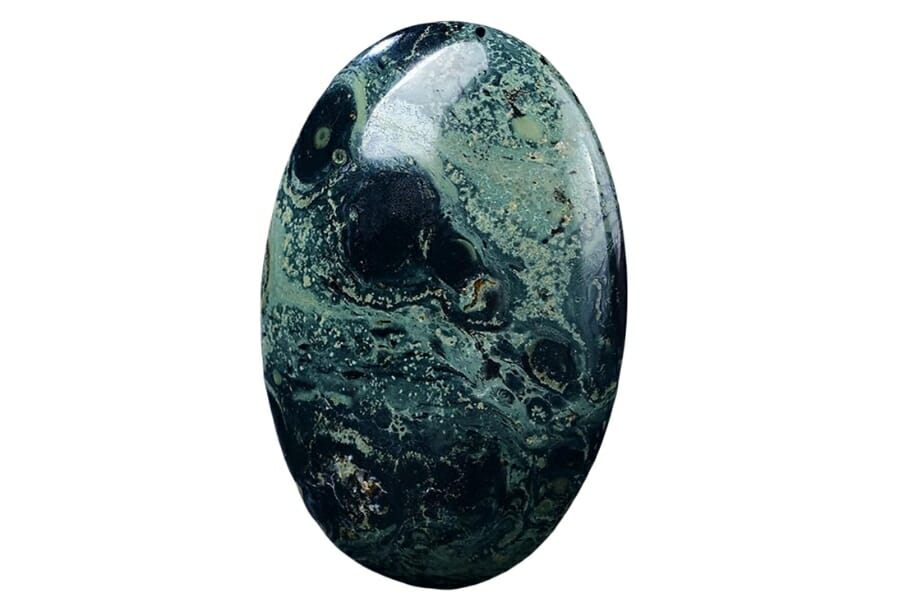
Green Jasper is distinctive for its lush, varying shades of green, often accompanied by patterns or swirls in lighter or darker hues. The green coloration is usually due to iron silicates or other trace minerals like chromium.
Green Jasper is frequently found in metamorphic rocks, unlike the more commonly seen red or yellow jaspers, often associated with sedimentary environments. This variety of jasper is cherished for its vibrant color and unique geological settings.
Ocean Jasper
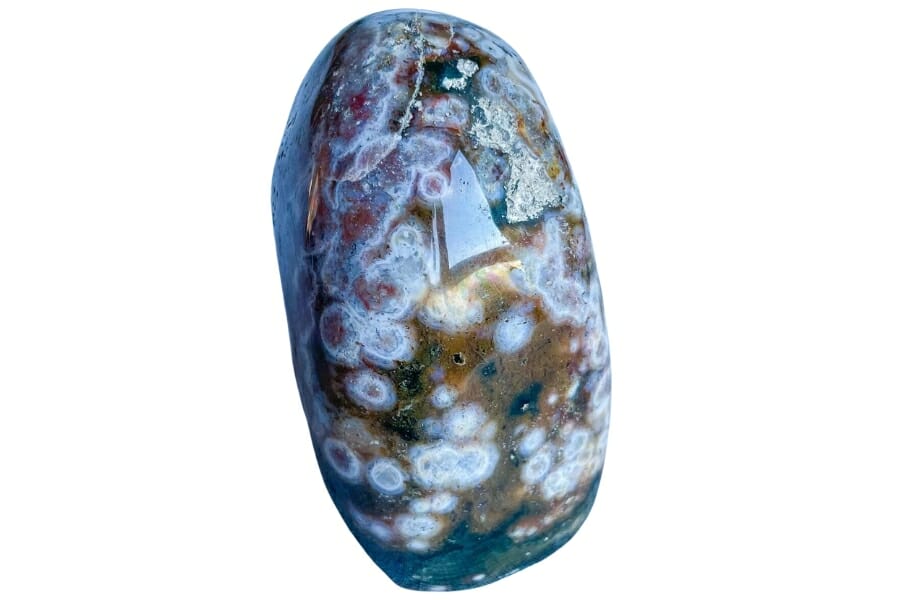
Ocean Jasper is known for its beautiful patterns, which often look like orbs or “eyes” and are set against a green, pink, and cream background. The more common jaspers look more the same than this mesmerizing variety.
Most jaspers come from sedimentary or igneous rocks, but Ocean Jasper comes from nodules in rhyolite flows full of minerals. Its unique patterns and place of origin make it a gemstone that collectors want.
Picture Jasper
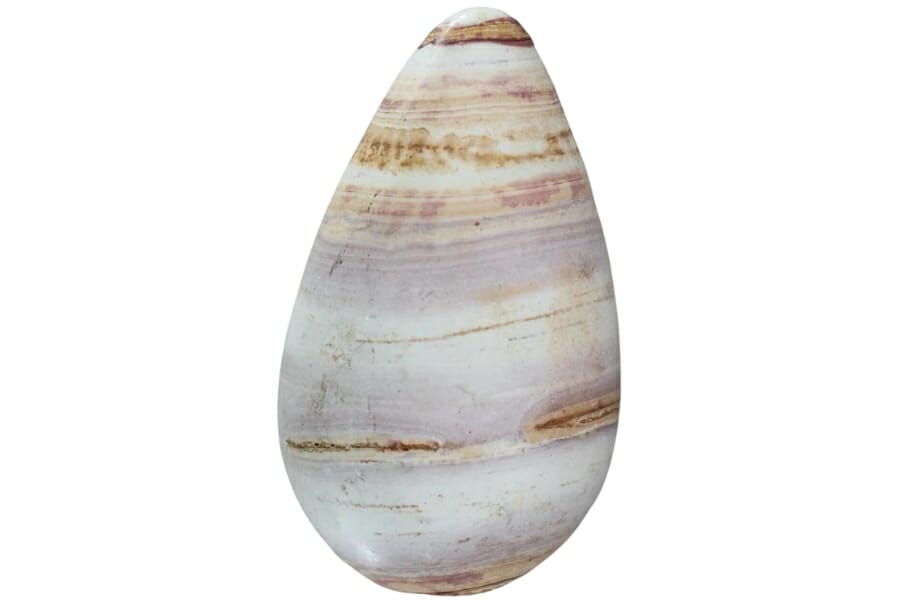
Picture Jasper is known for its intricate patterns that look like landscapes and are made up of earthy brown, tan, and gray tones. Because of these patterns, each piece is unique and exciting, which sets it apart from jaspers with more uniform colors.
These patterns are mostly made of silicate or hardened mud and look like mountains, plains, or even sunsets. Most of the time, jasper is found in sedimentary rocks but also in volcanic or metamorphic rocks. It’s a favorite among collectors and jewelry makers because it looks so attractive.
Rainforest Jasper
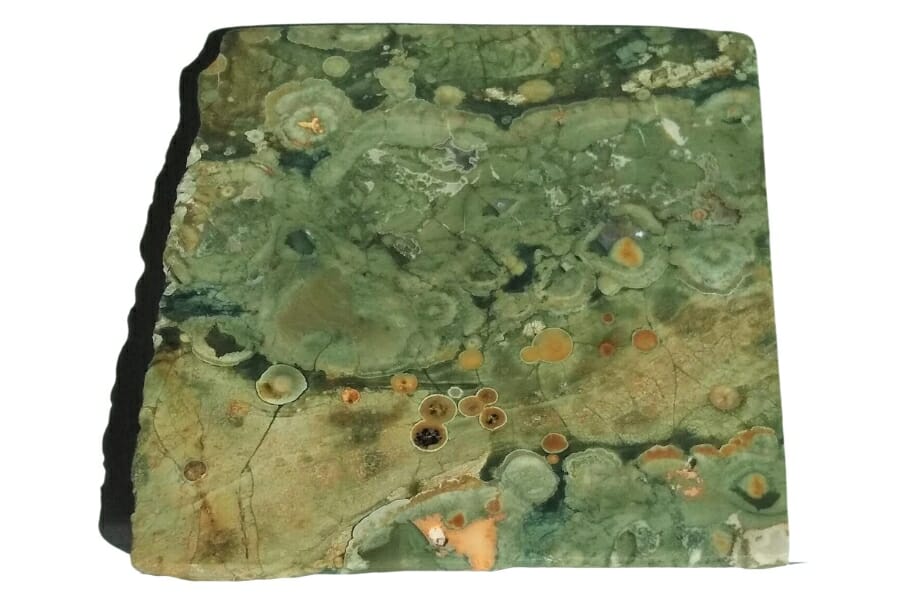
Rainforest Jasper is one of a kind because it has a bright green background with spots of brown, yellow, and even some reddish hues. With mossy greens and earthy browns, the patterns can look like a small forest, making each piece a tiny work of art.
Unlike the more common red and yellow jaspers, often found in sedimentary deposits, Rainbowforest Jasper is usually linked to volcanic activity and is a type of rhyolitic lava found in these places. This fascinating variety shows how different geological processes work.
Yellow Jasper
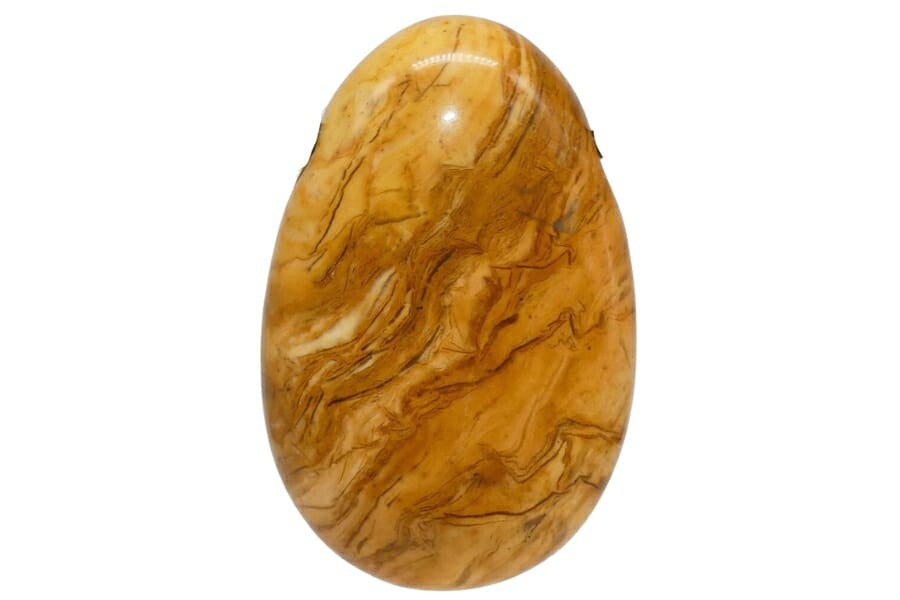
Yellow jasper is known for its warm, golden-yellow colors, ranging from light to darker mustard-like colors. Iron is often what gives red jasper its color, but iron in different oxidation states or other trace elements gives Yellow Jasper its yellow color.
This type is often found in alluvial deposits, where water has moved it from its original location and put it down. Unlike red and brown jaspers, which are more common, yellow jasper is usually found in deserts or near large bodies of water like rivers and lakes.
Its bright colors and patterns, which are often very complicated, make it a favorite among collectors and artists.
Where to find Jasper
Even though these gems can be found worldwide, some places stand out. If you want to know how to find Jasper in the US, you have a better chance in some places than others.
Bruneau Canyon, Idaho
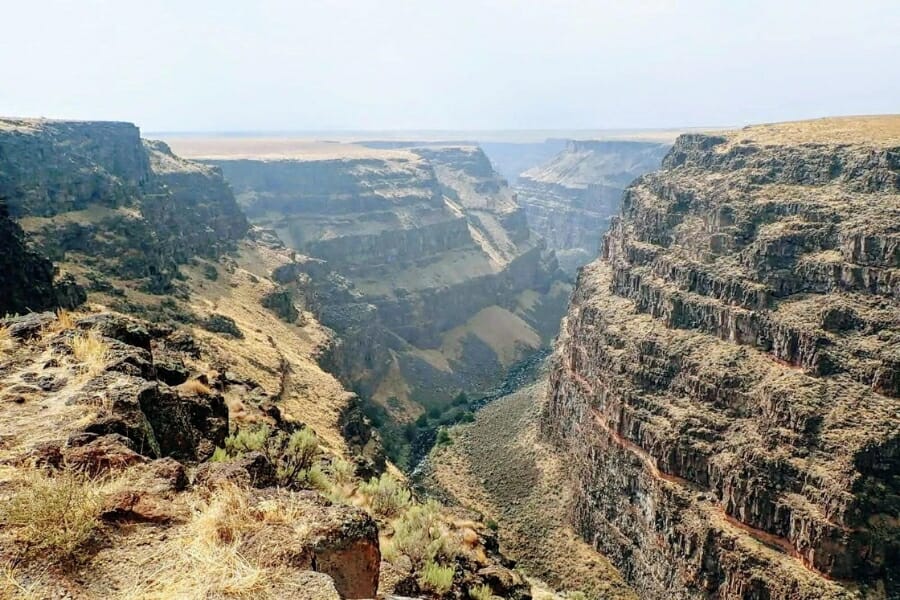
Bruneau Canyon in Idaho is a great place to look for high-quality jasper. Geological conditions make it an excellent place for this valuable gemstone to form.
It often has patterns resembling landscapes and rich colors like red, brown, and cream. The remote location of the canyon also helps keep these specimens in good shape, making it an excellent place for collectors.
Bruneau Canyon is the place to go if you want to see a Bruneau jasper that is beautiful and unique.
Death Valley, California

Even though Death Valley in California has a harsh condition, it’s a good place to find minerals. Geological features like alluvial deposits and sedimentary formations make the area a good place to look for jasper.
You can find different kinds of jasper in this area, often with unique colors like Red Jasper, Yellow Jasper, and even Blue Jasper and Green Jasper. Most of the time, these stones are scattered where water has moved and left minerals behind.
Mojave Desert, California
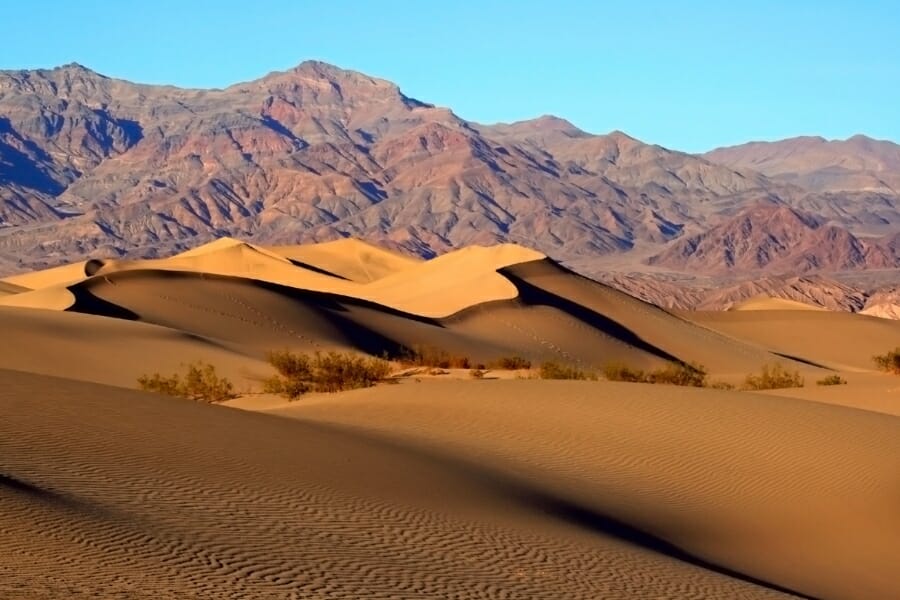
The Mojave Desert in California is a great place to find minerals, like jasper, if you like to go rock hunting. Sedimentary rock formations and alluvial deposits in the desert make it possible for jasper to form.
Here, you can find jasper with earthy colors like red, brown, and yellow. You can also find jasper with exciting patterns, like banded or brecciated jasper. The large, dry area has many different species, making it a popular place for collectors.
Commonly, you can find jasper in earthy tones such as reds, browns, and yellows, which often mirror the desert’s color palette.
Owyhee Mountain, Oregon
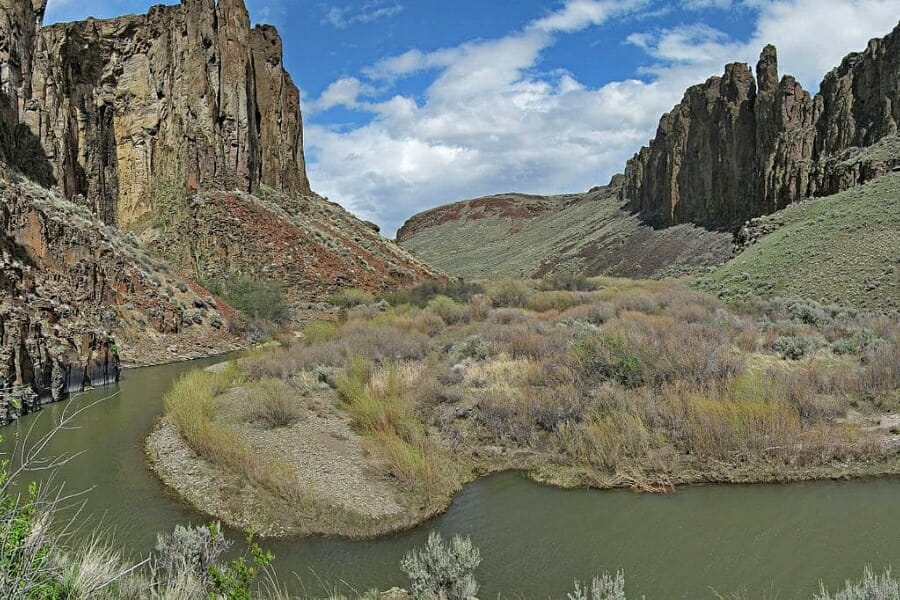
The Owyhee Mountains are an excellent place for rock hunters, especially those looking for good jasper. Most people know the area for its Owyhee Jasper, a unique type of jasper with beautiful red, orange, and cream patterns that often look like landscapes.
The geology of these mountains is perfect for forming jasper, which is found in sedimentary and volcanic rock formations. Many collectors go to the Owyhee area because it has excellent jasper pieces. This makes it one of the best places in the U.S. for Jasper fans.
Saddle Mountain, Washington
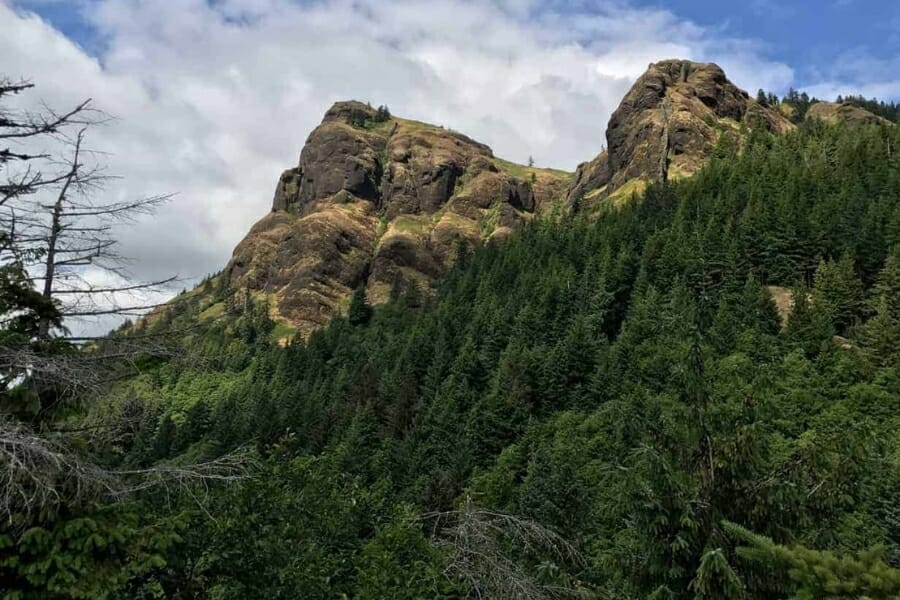
Saddle Mountain in Washington is a popular site for rock collectors due to its sedimentary formations rich in jasper and other silicate minerals. The mountain is known for its red and yellow jasper, often found amid other chalcedony deposits.
The public lands surrounding the mountain offer rockhounds the opportunity to uncover unique specimens, making it an accessible location for both amateurs and experienced collectors. The various colors and patterns of Saddle Mountain jasper make it a highly sought-after find.
The area is known for its red and yellow jasper deposits, commonly found in sedimentary rock formations.
How to find Jasper
When looking for jasper, there are many ways to do it. Each method is a different adventure and a chance to find these beautiful gems.
Observe the color and pattern
Jasper is known for its vivid, earthy colors like red, yellow, brown, and green. It may have a variety of patterns, including stripes, bands, or spots. Some jasper stones can also have more intricate designs resembling landscapes.
These colors and patterns are often a clue to the mineral impurities that influenced the stone’s formation, and they can serve as your guide to finding more jasper in the area.
Look after rainfall
It can be especially rewarding to look for jasper after it has rained. Rain has a natural way of washing away the top layers of soil and exposing hidden gems and minerals, like jasper.
Not only does the rain reveal new stones, but it also makes the colors and patterns of the stones stand out more, making them easier to find among the other rocks and debris. In alluvial places like riverbeds, creeks, and flood plains, heavy things like gemstones like jasper are naturally sorted out and deposited by the water.
Study geological maps and reports
Geological maps and reports can give you essential information about where jasper is likely to be found. Most of the time, these resources tell you what kinds of rock formations are in different areas, how old they are, and what they look like.
For example, if you know that sedimentary rocks in a certain area often contain jasper, a geological map can help you find where these rocks are common. In the same way, geological reports often talk about mineral deposits, such as those of silica, which is the central part of jasper.
How to identify Jasper once you find it
Jaspers stand out from other gems because they are different in many ways. Let’s get into the specifics of identifying a jasper when you get your hands on them.
What Jasper looks like on the outside
The outside of a jasper can look very different depending on what kind it is, but there are some general things to look for:
Patterns
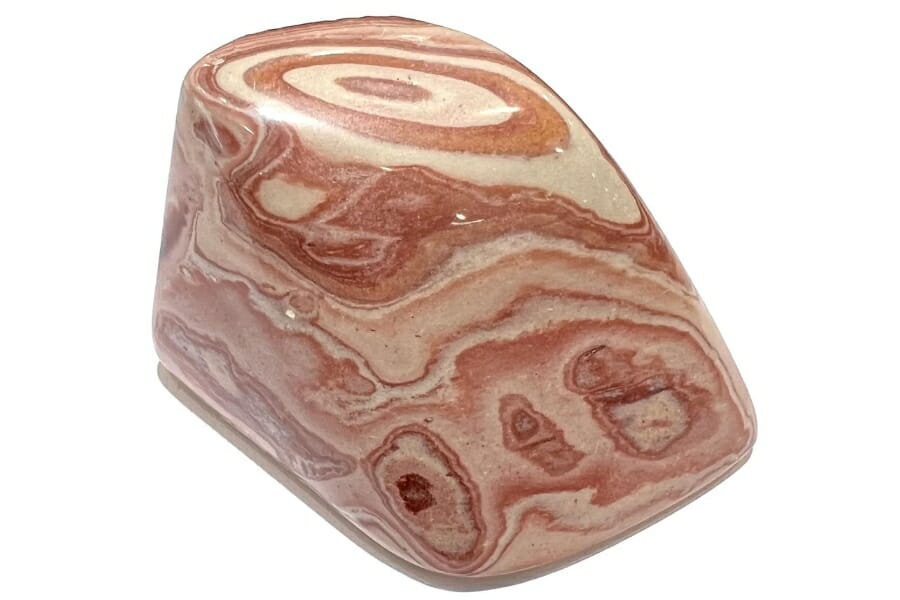
Rough jasper often has exciting patterns and inclusions on its surface, which makes each piece unique. Even though the colors can be very different, Jasper’s intricate designs stand out.
The stone may have swirls, spots, stripes, or bands that go through it. Some kinds of jasper, like Picture Jasper, can even look like miniature landscapes with “mountains,” “valleys,” and “sunsets.”
Opacity
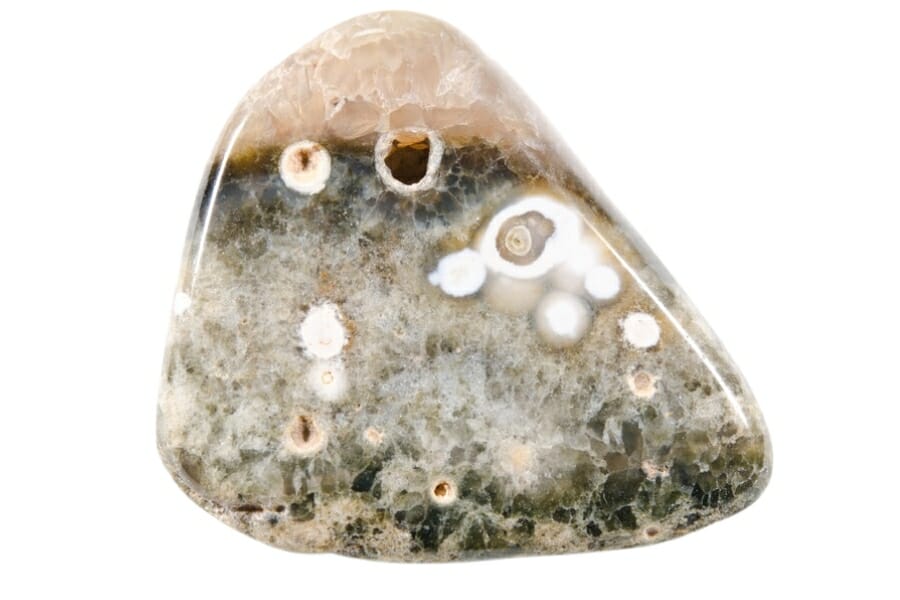
Unlike other forms of chalcedony, which can be semi-translucent, jasper is usually opaque, meaning it doesn’t let light through. Holding it up to a light source will generally not show any translucency.
This is a key characteristic that distinguishes jasper from other types of quartz or chalcedony, which may exhibit varying degrees of translucency. The opacity often enhances the stone’s rich colors and intricate patterns, making them more visually striking.
Luster
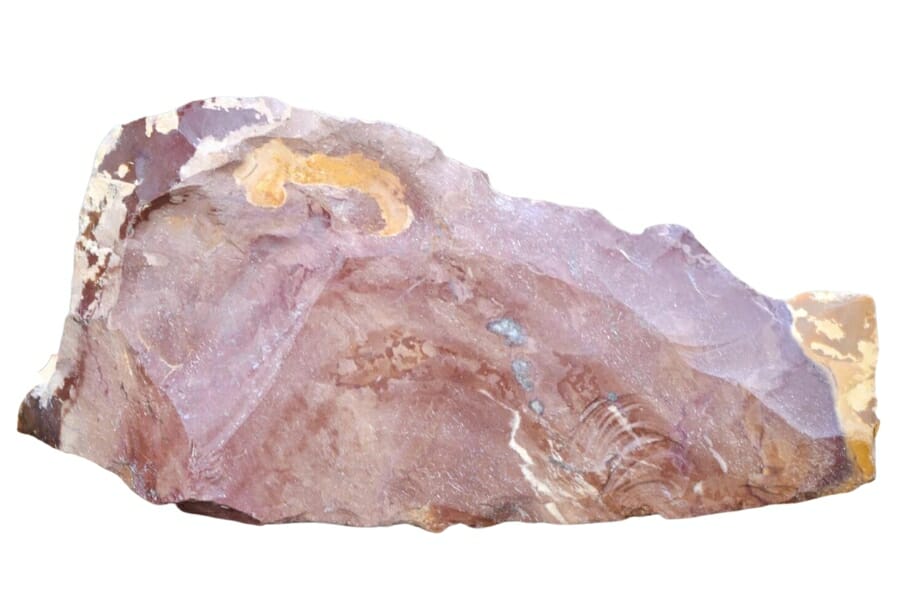
Unpolished jasper may have a dull to vitreous (glass-like) luster. However, it can take on a waxy, glossy appearance when polished. Rough jasper’s shine can range from dull to vitreous, which means it can look like glass even when not polished.
But it’s not unusual to find pieces with a matte or earthy finish, especially if they’ve been in the elements for a long time. In contrast to polished jasper, which has a waxy or shiny sheen, rough jasper usually has a duller sheen. This dull shine can help bring out the natural colors and patterns of the stone.
What Jasper looks like on the inside
The features on the inside of jasper can be very similar to those on the outside, but they are often more concentrated or vivid. Here are some things that are often seen:
Inclusions
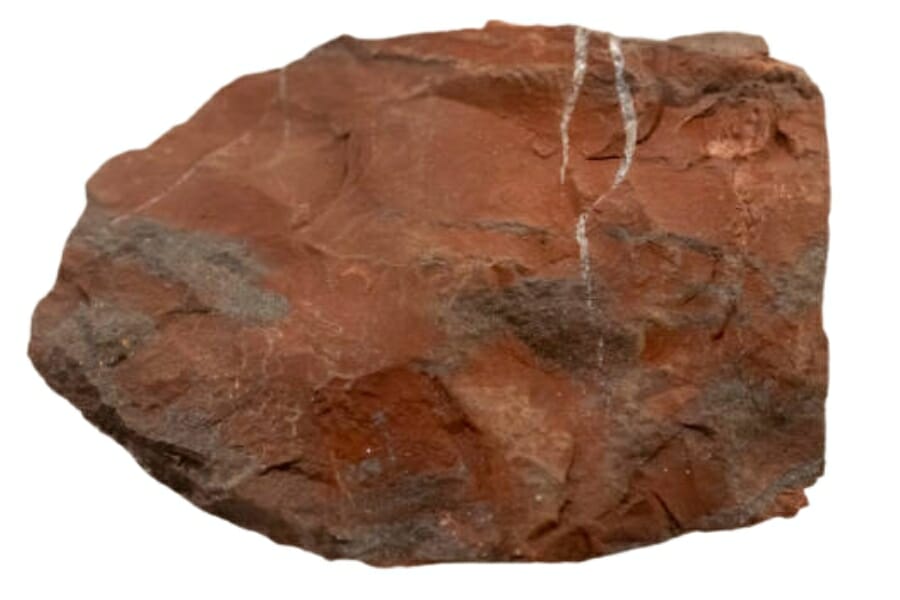
The inclusions in the interior of rough jasper can be pretty striking and varied, often providing clues to the mineral impurities and geological processes involved in its formation.
These inclusions may appear as streaks, specks, or more complex patterns and can differ in color from the primary hue of the jasper. Elements like iron, manganese, and other trace minerals may contribute to these unique features.
Uniformity
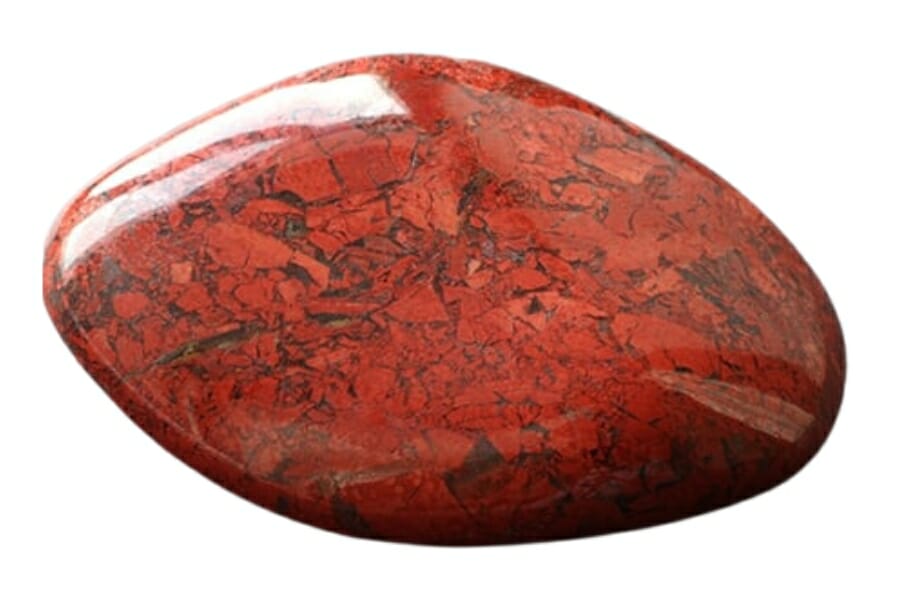
Depending on the type of jasper, the inside may be more uniform in appearance, especially in color distribution and pattern consistency.
The interior of rough jasper can exhibit varying degrees of uniformity depending on its type and formation conditions. While some specimens may showcase consistent color and pattern, others might have zones of differing hues or intricate designs.
The uniformity can also be impacted by mineral inclusions, creating a speckled or streaked appearance. Despite these variations, the inside is generally more homogeneous than the weathered exterior, revealing a cleaner, more focused expression of the stone’s inherent qualities.
Hardness
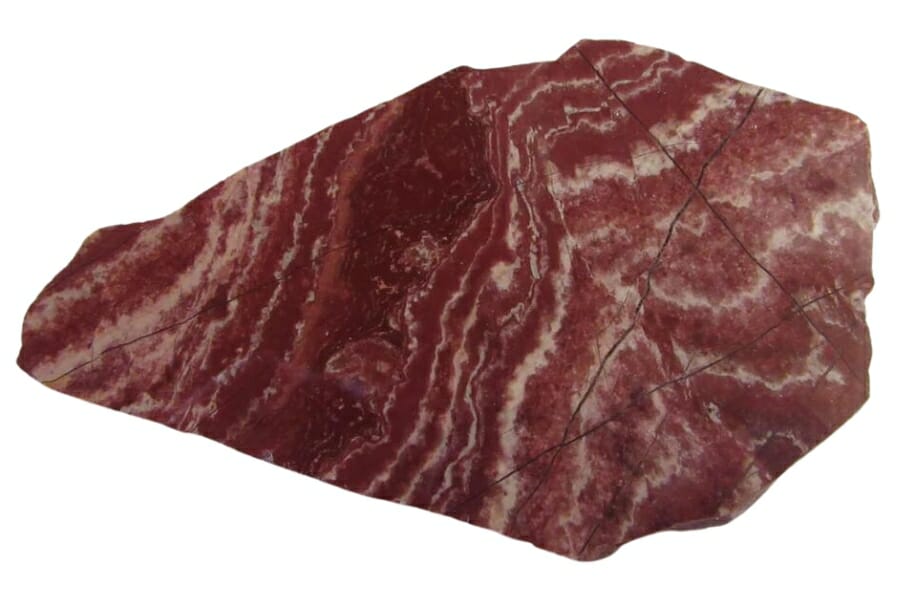
The hardness of jasper is generally consistent throughout its structure, both inside and out, with a rating of approximately 6.5-7 on the Mohs scale. This makes it resistant to scratching by softer materials and gives it durability.
While you can’t visually identify hardness, the stone’s resilience becomes apparent when you try to scratch or carve it.
The inner part is often used for carving, tumbling, or cutting into slabs for its hardness and consistent texture, which makes it a favored material for jewelry and ornamental objects.

